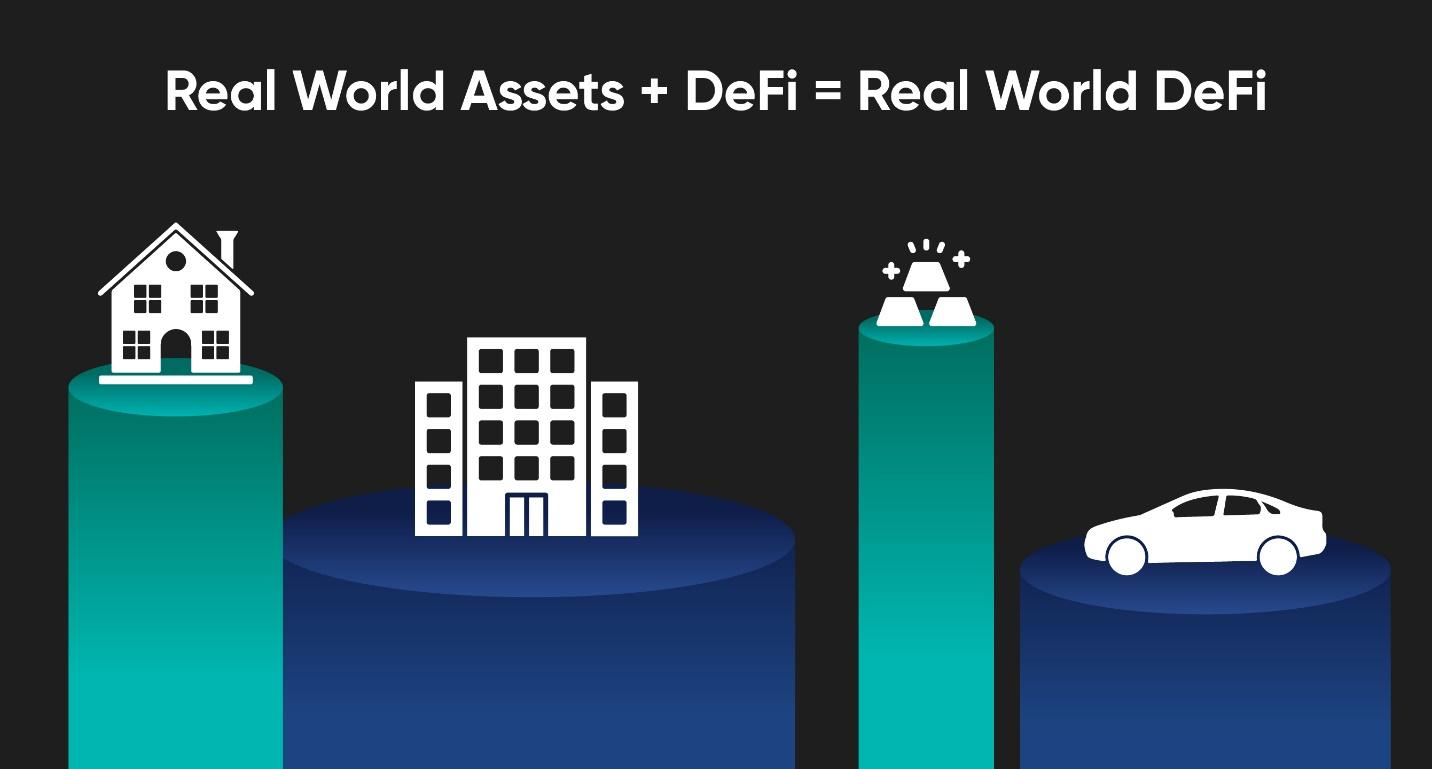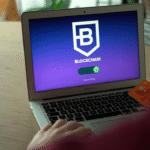The landscape of finance and investment is evolving rapidly, thanks in large part to the advent of blockchain technology. One of the most transformative developments in this space is the tokenization of real-world assets (RWA). This concept, which involves creating digital tokens that represent ownership or rights to physical assets, is revolutionizing the way we think about ownership, investment, and financial markets. This comprehensive guide aims to introduce you to real-world asset tokenization, explaining how it works, its benefits, and its potential impact on the digital asset market.
Whether you have prior investment experience or are just starting to explore the possibilities of blockchain, understanding real-world asset tokenization is crucial. As we delve deeper, we’ll also touch on various aspects of digital asset management and consulting services, including how consultancy for DeFi finance investments and blockchain asset investments consultants are playing a significant role in this new financial frontier.
What is Real-World Asset Tokenization?
At its core, real-world asset tokenization refers to the process of creating a digital token on a blockchain that represents a physical asset. These assets can range from real estate, art, commodities like gold, to more esoteric assets like intellectual property or even revenue streams. The token acts as a digital representation of the asset, and it can be bought, sold, and traded on blockchain platforms, similar to how cryptocurrencies like Bitcoin and Ethereum are traded.
The concept of tokenization is not entirely new; it has its roots in the traditional financial system where securities, such as stocks and bonds, represent ownership in a company or a debt obligation. However, what makes blockchain-based tokenization revolutionary is the transparency, security, and efficiency that blockchain technology brings to the table.
The Basics of Tokenization: What You Need to Know
How Does Tokenization Work?
The process of tokenization involves several key steps:
Asset Selection and Valuation
The cornerstone of tokenization is the underlying asset. This could encompass a tangible asset such as real estate, art, or commodities, or an intangible asset like intellectual property, debt, or revenue streams. A meticulous evaluation is essential to identify an asset with intrinsic value and market potential.
Asset valuation is the subsequent step. It involves a comprehensive assessment to determine the fair market value of the asset. This process typically includes appraisals, market analyses, and financial projections. The valuation serves as the foundation for token pricing and investor attraction.
Token Creation and Structuring
With the asset and its value established, the next phase involves transforming the asset into digital tokens. These tokens represent fractional ownership or specific rights associated with the underlying asset. The token structure, including type (security, utility, or hybrid), divisibility, and distribution mechanism, is meticulously designed to align with investment objectives and regulatory requirements.
Smart contracts, the self-executing code on blockchain platforms, underpin the tokenization process. These contracts codify the terms of ownership, transferability, dividend distribution (if applicable), and other relevant conditions. This ensures transparency, efficiency, and security in token management.

Token Issuance and Distribution
Once the tokens are minted and the smart contracts are deployed, the issuance and distribution process begins. The method of token distribution can vary widely, including:
Initial Coin Offering (ICO): A public sale of tokens to raise funds.
Initial Exchange Offering (IEO): An Initial Exchange Offering (IEO) is a token sale conducted directly on a cryptocurrency exchange platform. Unlike ICOs, where the project team handles all aspects of the token sale, IEOs are managed by the exchange, which acts as an intermediary. The exchange vets the project, handles the fundraising process, and lists the tokens on its platform post-sale.
IEOs have gained traction as a more secure and regulated alternative to ICOs, offering a layer of credibility due to the involvement of established exchanges. For investors, participating in an IEO typically means a higher level of due diligence has been performed by the exchange, reducing the risk of fraud. However, this method also comes with its own set of challenges, including higher listing fees and the need for projects to meet the exchange’s criteria, which can be stringent.
Security Token Offering (STO): A Security Token Offering (STO) is a regulated offering of tokens that are classified as securities, meaning they comply with securities regulations. Unlike utility tokens offered in ICOs or IEOs, security tokens represent ownership in an asset, such as equity in a company, revenue streams, or even real estate.
STOs are often seen as a bridge between traditional finance and the digital asset world, offering a way to tokenize real-world assets while adhering to existing financial regulations. This regulatory compliance adds a layer of legitimacy and security for investors, but it also means that STOs are subject to the same rigorous legal and regulatory requirements as traditional securities offerings. This includes compliance with Know Your Customer (KYC) and Anti-Money Laundering (AML) regulations, which can limit the pool of potential investors to accredited individuals or institutions.
Private Placement: Private Placement is a method of raising funds by selling tokens to a limited number of accredited investors, rather than the general public. This approach is often used by projects that seek to avoid the regulatory scrutiny associated with public offerings like ICOs or STOs, or by those that prefer to maintain a lower profile.
In a Private Placement, tokens are offered directly to a select group of investors, usually through negotiated terms that can include discounts, lock-up periods, and other conditions favorable to early backers. This method is often favored by projects looking to raise large amounts of capital quickly without the need for extensive marketing or regulatory approvals. However, because it limits participation to accredited investors, it can reduce the potential pool of funds compared to more public fundraising methods.
Each method has its own set of legal, regulatory, and marketing considerations.
Secondary Market and Trading
To enhance liquidity and investor participation, a secondary market for token trading is crucial. Blockchain technology facilitates peer-to-peer trading, eliminating intermediaries and reducing transaction costs. Established cryptocurrency exchanges and decentralized exchanges (DEXs) provide platforms for token trading.
The availability of a liquid secondary market increases the asset’s attractiveness to investors, as it allows for efficient buying and selling of tokens.
Regulatory Compliance and Governance
Navigating the complex regulatory landscape is paramount for successful tokenization. Digital asset consulting firms specialize in providing guidance on compliance matters, including securities laws, anti-money laundering (AML) regulations, and investor protection requirements.
Robust governance structures are essential to protect investor interests and maintain the integrity of the tokenized asset. This involves establishing clear roles and responsibilities, implementing risk management procedures, and ensuring transparency in operations.
Benefits of Real-World Asset Tokenization
Tokenization is revolutionizing the way assets are owned, traded, and managed, offering a myriad of benefits that are reshaping the financial landscape.
Increased Liquidity and Accessibility
One of the most compelling advantages of tokenization is the dramatic increase in liquidity for traditionally illiquid assets. By dividing assets into smaller, fractionalized tokens, tokenization democratizes investment, allowing a broader range of investors to participate. For instance, a valuable piece of real estate, once accessible only to high-net-worth individuals, can be tokenized, enabling smaller investors to own a fraction of the property.
This increased liquidity not only benefits investors but also asset owners, providing them with a more efficient way to raise capital. Consider a private company seeking funding; by tokenizing a portion of its equity, it can tap into a global pool of investors without resorting to traditional, time-consuming fundraising methods.
Enhanced Transparency and Security
Blockchain technology, the bedrock of tokenization, is synonymous with transparency and security. Every transaction is recorded on an immutable ledger, creating an auditable trail that can be verified by anyone. This level of transparency reduces information asymmetry, a common challenge in traditional financial markets.
Furthermore, the decentralized nature of blockchain makes it highly resistant to fraud and hacking. Since there is no single point of failure, the risk of data breaches and financial loss is significantly reduced. This heightened security instills confidence in investors and market participants.
Efficiency, Cost Reduction, and Automation
Tokenization streamlines complex asset management processes by automating many tasks. Smart contracts, self-executing code embedded within blockchain transactions, handle functions such as ownership transfer, dividend distribution, and voting rights. This automation eliminates the need for intermediaries, such as brokers, custodians, and transfer agents, resulting in substantial cost savings.
For example, tokenized securities can be traded 24/7 on decentralized exchanges, bypassing traditional stock exchanges with their associated fees and settlement times. This increased efficiency and speed of execution create a more dynamic and accessible market.
Global Reach and New Investment Opportunities
Tokenization transcends geographical boundaries, enabling the creation of truly global financial markets. Assets can be tokenized and traded anywhere in the world, providing investors with unprecedented access to a diverse range of investment opportunities.
This global reach is particularly beneficial for emerging markets, where access to capital can be limited. By tokenizing assets, developing economies can attract foreign investment and accelerate economic growth. Additionally, tokenization opens doors for innovative financial products, such as tokenized derivatives and structured products, which can cater to the diverse needs of sophisticated investors.

Real-World Examples of Asset Tokenization
Tokenization is transforming diverse asset classes, opening up new investment avenues and unlocking unprecedented liquidity.
Real Estate Tokenization
The real estate sector has been at the forefront of tokenization. By fractionalizing ownership into digital tokens, properties, from residential to commercial, are becoming accessible to a broader investor base. For instance, Property Tokenization platforms allow investors to purchase tokens representing fractional ownership in properties, enabling participation in lucrative real estate markets without the need for substantial capital.
Beyond fractional ownership, tokenization is revolutionizing real estate financing. Real Estate Investment Trusts (REITs) are increasingly exploring tokenization to enhance liquidity and attract a wider investor base. By issuing tokenized shares, REITs can tap into a global pool of investors, potentially accelerating capital raising and portfolio diversification.
Art and Collectibles Tokenization
The art world, renowned for its exclusivity, is undergoing a paradigm shift with tokenization. Platforms like Masterworks have pioneered fractional ownership of high-value artworks, democratizing access to this previously elite asset class. Investors can now build diversified art portfolios without breaking the bank.
Moreover, tokenization is reshaping the collectibles market. From rare sneakers to vintage wines, collectibles are being transformed into digital assets. This not only enhances liquidity but also provides a verifiable provenance for these assets, combating counterfeits and ensuring authenticity.

Commodity Tokenization
Commodities, traditionally held as physical assets, are finding new life in the digital realm through tokenization. Gold-backed tokens are a prime example, offering investors exposure to the precious metal without the physical storage and security concerns. This digital representation of gold enhances liquidity, enabling seamless trading and transfer.
Beyond gold, other commodities like oil, agricultural products, and industrial metals are being explored for tokenization. This could revolutionize supply chain management, trade finance, and risk management by providing transparent and efficient digital representations of these assets.
Intellectual Property Tokenization
Tokenization is unlocking the potential of intellectual property (IP) as an investment asset. By converting copyrights, patents, and trademarks into digital tokens, artists, inventors, and businesses can monetize their creations more effectively.
For example, music royalties can be tokenized, allowing fans to invest in their favorite artists and share in future earnings. Similarly, patent portfolios can be fractionalized, providing investors with exposure to the potential returns from groundbreaking innovations.
Revenue Stream Tokenization
Tokenization is extending beyond asset ownership to future cash flows. Companies are exploring the tokenization of revenue streams, such as royalty payments, subscription fees, or future profits. This can provide businesses with alternative financing options and investors with exposure to the growth potential of specific revenue generators.
For instance, a streaming service could tokenize its future subscription revenue, allowing investors to participate in its growth. This can be particularly attractive for startups and high-growth companies seeking to raise capital without diluting equity.
Challenges and Considerations in Real-World Asset Tokenization
While the potential benefits of tokenization are immense, several challenges and considerations must be addressed to ensure its successful implementation and widespread adoption.
Regulatory Uncertainty
One of the most significant hurdles facing tokenization is the lack of a clear and consistent regulatory framework. Digital assets and their underlying technologies often fall into regulatory gray areas, creating confusion and uncertainty for both issuers and investors. Navigating complex legal and compliance landscapes is essential to avoid regulatory pitfalls and build investor trust.
Technological Limitations
Despite advancements in blockchain technology, scalability, interoperability, and security remain significant challenges. Blockchain platforms must be able to handle high transaction volumes without compromising speed or cost-efficiency. Additionally, ensuring seamless communication and data exchange between different blockchain networks is crucial for the broader adoption of tokenized assets. Furthermore, the security of digital assets and the underlying infrastructure require continuous attention to protect against cyber threats and vulnerabilities.
Market Adoption and Education
Widespread market adoption of tokenization is essential for its long-term success. Educating investors, businesses, and regulators about the benefits, risks, and opportunities of tokenization is crucial. Building trust and confidence in the technology and the underlying assets is key to attracting a broader investor base. Overcoming skepticism and addressing misconceptions about digital assets will be essential for fostering market growth.

Valuation and Pricing Challenges
Accurately valuing tokenized assets can be complex, especially for unique or illiquid assets. Traditional valuation methods may not be directly applicable to digital assets, necessitating the development of new valuation frameworks. Additionally, ensuring fair pricing and preventing market manipulation are critical for maintaining investor confidence.
Custody and Security Risks
The safekeeping of digital assets requires robust custody solutions. Protecting tokens from theft, loss, or unauthorized access is paramount. While blockchain technology offers inherent security benefits, vulnerabilities can still exist, such as smart contract bugs or phishing attacks. Implementing robust security measures, including cold storage, multi-factor authentication, and insurance, is essential to mitigate risks.
Tax Implications
The tax treatment of tokenized assets is another area of uncertainty. Determining the appropriate tax classification for tokens and their associated income can be complex and varies across jurisdictions. Investors and issuers need to carefully consider the tax implications of tokenization to avoid unexpected liabilities.
Investor Protection
Protecting investors is crucial for the long-term viability of the tokenization industry. Implementing investor protection measures, such as disclosure requirements, anti-money laundering (AML) and know-your-customer (KYC) checks, and investor education, is essential to building trust and confidence in the market.
Addressing these challenges requires collaboration between industry participants, regulators, and technology providers. By working together to develop standards, best practices, and regulatory frameworks, the tokenization industry can overcome obstacles and unlock its full potential.
Future Prospects and Trends in Real-World Asset Tokenization
The landscape of real-world asset tokenization is rapidly evolving, with several promising trends indicating substantial growth and innovation in the coming years.
Convergence of Real-World Assets and DeFi
One of the most exciting developments is the increasing integration of real-world assets with decentralized finance (DeFi) protocols. This convergence opens up a world of possibilities for investors, enabling them to earn yields on tokenized assets through lending, staking, and other DeFi mechanisms. For instance, tokenized real estate could be used as collateral for DeFi loans, providing property owners with liquidity while generating returns for lenders. This trend is likely to be accelerated by the development of specialized DeFi real-world asset investment consultants who can help navigate the complexities of this emerging space.

Expansion of Tokenizable Asset Classes
The range of assets suitable for tokenization is expanding beyond traditional asset classes like real estate and art. We can expect to see tokenization applied to a wider array of assets, including intellectual property, carbon credits, and even human capital. For example, athletes or musicians could tokenize their future earnings, allowing fans to invest in their careers. This diversification of tokenizable assets will create new investment opportunities and drive innovation in the tokenization industry.
Institutional Adoption and Market Maturation
The growing interest from institutional investors is a significant catalyst for the maturation of the tokenization market. As more hedge funds, pension funds, and other large financial institutions allocate capital to tokenized assets, we can anticipate increased liquidity, price stability, and the development of more sophisticated financial products. This institutional influx will also drive demand for specialized services, such as custody, valuation, and risk management, provided by global digital asset consulting firms.
Regulatory Clarity and Framework Development
The establishment of clear and comprehensive regulatory frameworks is essential for the long-term growth of the tokenization industry. As regulators worldwide grapple with the challenges of regulating digital assets, we can expect to see the development of more tailored frameworks for real-world asset tokenization. This regulatory clarity will foster investor confidence, reduce legal risks, and attract a wider range of participants to the market.

Real-world asset tokenization is poised to revolutionize the way we think about ownership, investment, and finance. By leveraging blockchain technology, tokenization offers unprecedented levels of liquidity, transparency, and accessibility, opening up new opportunities for investors and businesses alike. However, navigating this complex and rapidly evolving landscape requires expertise and strategic guidance.
Whether you’re an individual investor exploring cryptocurrency investment options, a startup looking for digital asset consulting for compliance, or a large institution seeking to integrate blockchain into your investment strategy, the role of consulting firms in this space cannot be overstated. As the market for tokenized assets continues to grow, these firms will play a crucial role in helping businesses and investors capitalize on the opportunities presented by this transformative technology.
The future of real-world asset tokenization is bright, and with the right strategies and support, businesses and investors can position themselves at the forefront of this exciting new frontier in finance.
Work With Kenson Investments
Are you ready to expand your financial knowledge and take charge of your financial journey? At Kenson Investments, we believe that education is the key to financial empowerment. Our mission is to provide you with the resources, insights, and tools you need to better understand the complexities of the financial world, including digital asset management consultant services and cryptocurrency investment consultant expertise. Whether you’re interested in learning about stablecoins for investment, altcoin investment, or cryptocurrency investment solutions, or deepening your understanding of digital asset consulting for compliance and digital asset portfolio management, our educational materials are designed to help you. Join our community today and start building a stronger foundation for your future with Kenson Investments.
Disclaimer: The information provided on this page is for educational and informational purposes only and should not be construed as financial advice. Crypto currency assets involve inherent risks, and past performance is not indicative of future results. Always conduct thorough research and consult with a qualified financial advisor before making investment decisions.
“The crypto currency and digital asset space is an emerging asset class that has not yet been regulated by the SEC and US Federal Government. None of the information provided by Kenson LLC should be considered as financial investment advice. Please consult your Registered Financial Advisor for guidance. Kenson LLC does not offer any products regulated by the SEC including, equities, registered securities, ETFs, stocks, bonds, or equivalents”














